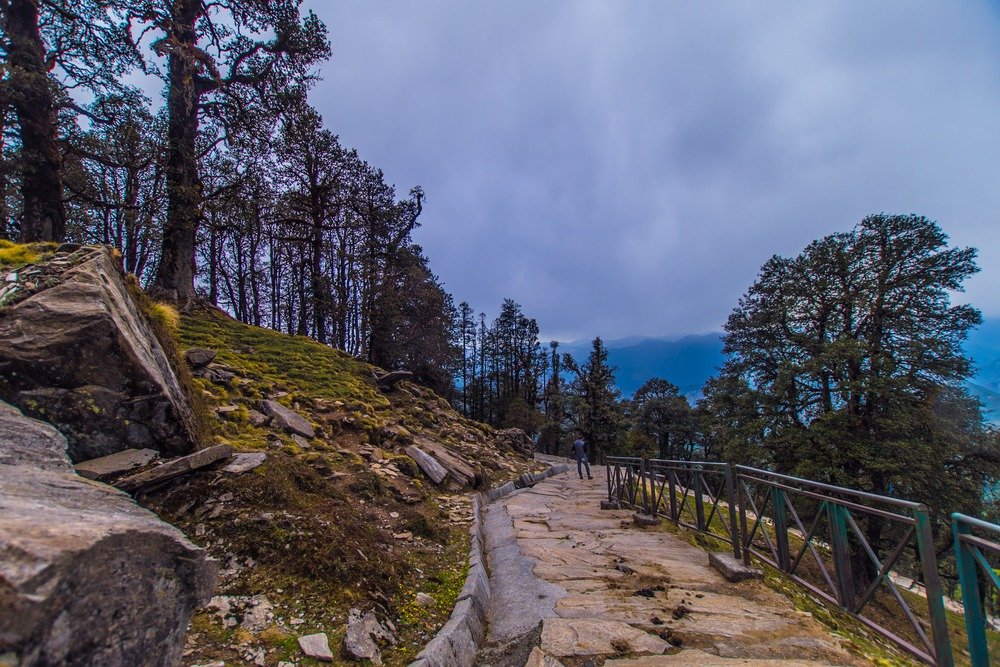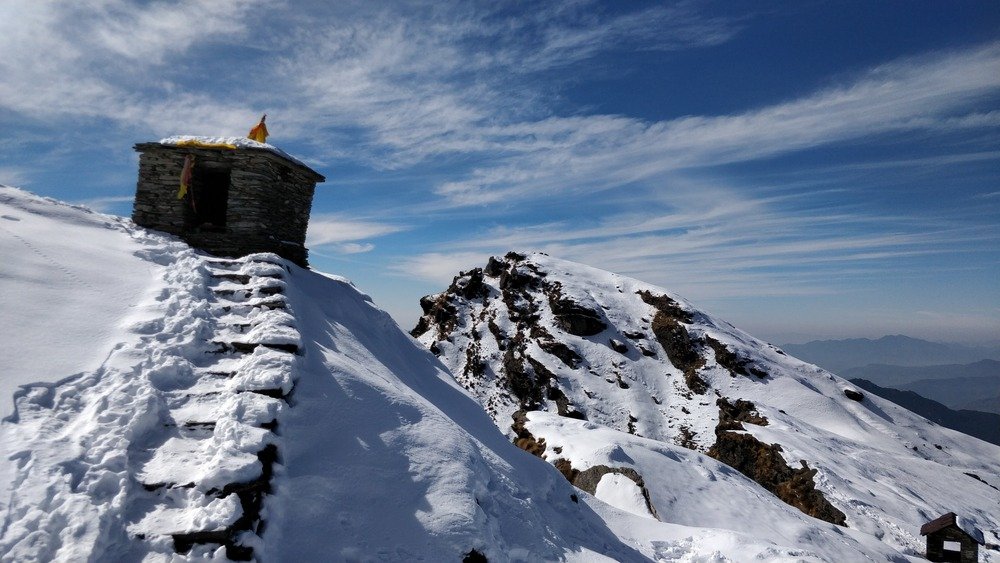If you’re looking for an adventure that combines breathtaking views, rich culture, and a touch of spirituality, the Chopta Tungnath trek should be on your bucket list. As I ventured into this stunning region, I discovered that the timing of your trek can truly make or break the experience. So, let me share my journey through the seasons, helping you find the perfect time for your own trek!
1. Discovering the Magic of Chopta Tungnath Trek
The moment I set foot on the trail to Tungnath, I was captivated by the vibrant landscapes and serene atmosphere. This trek isn’t just about reaching a destination; it’s about soaking in the beauty that surrounds you. The journey begins at Chopta, a little town known as the “Mini Switzerland of India.” It was difficult for me to put into words the feeling of calm and connection I had with nature as I strolled through lush meadows and dense forests.
The trek also holds deep spiritual significance, being home to one of the highest Shiva temples in the world. Standing in front of Tungnath Temple, I felt a profound sense of reverence. The atmosphere was charged with spirituality, and it’s this blend of natural beauty and cultural richness that makes Chopta Tungnath so special.

2. Spring Awakenings (March to April)
Spring in Chopta is simply magical. I remember feeling the chill of winter slowly fade away, replaced by the warmth of the sun. The snow began to melt, revealing the vibrant flora underneath. As I trekked through rhododendron forests in full bloom, I couldn’t help but marvel at nature’s colors—pink, red, and white flowers carpeting the ground.
In addition to the visual beauty, spring is also a time of tranquility. The trails were less crowded compared to the summer months, allowing for a more intimate experience with nature. The sound of the birds singing and the gentle rustle of the leaves in the wind used to make me stop a lot. Just keep an eye out for the remnants of snow at higher altitudes; it can add a touch of adventure to your trek!
3. Embracing Summer Vibes (May to June)
Summer is when the trek truly comes alive! The weather was just perfect—warm but not too hot, making my days on the trail incredibly enjoyable. I was enthralled with the vivid flowers and lush vegetation all around me. The meadows seemed to burst into life, and the trails were alive with the sounds of nature.
However, I did notice more trekkers joining me during this peak season, eager to soak in the stunning views. While this meant sharing the trails with others, it also created a sense of camaraderie. I found myself chatting with fellow trekkers, sharing stories, and forming connections that made the journey even more enjoyable. If you don’t mind the company, this is the ideal time to visit!
4. The Challenge of Monsoon (July to August)
Even though I enjoy the rain, trekking in the monsoon was an entirely other experience. The landscape transformed dramatically; the vibrant greens were amplified, but so were the challenges. The trails turned slippery and treacherous, requiring extra caution with each step. I learned to appreciate the beauty of the rain-soaked earth, but I also had to adapt my trekking style.
Nevertheless, there was a certain allure to the verdant surroundings, like to a concealed treasure that merely needed to be found. I remember finding secluded spots with breathtaking views that felt like they belonged to a secret world. If you’re feeling adventurous and don’t mind getting a little wet, this season can offer a unique perspective—but be prepared for some challenges!
5. Autumn’s Splendor (September to November)
Autumn felt like a breath of fresh air after the rains. The weather was crisp and clear, and the golden hues of fall made every step a visual delight. The vibrant colors of the leaves contrasted beautifully against the majestic backdrop of the Himalayas. I remember capturing stunning photographs, trying to encapsulate the beauty that surrounded me.
This season became my favorite as I trekked through breathtaking vistas with fewer tourists around. I felt like I could really connect with nature because the trails were quieter. The clear skies provided fantastic visibility, making it the perfect time for photography enthusiasts. If you’re after ideal trekking conditions and stunning landscapes, this is the time to be there!
6. Winter Wonderland (December to February)
Winter brought a completely different charm to Chopta. The trails were covered in a pristine layer of snow, creating a magical winter wonderland. It was as if I were strolling through a postcard! The crunch of snow beneath my boots was the only sound that shattered the physical silence.
However, it’s important to be well-prepared with proper gear to handle the cold and snow. I layered my clothing and brought along thermal gear, which made all the difference. For those who crave solitude and breathtaking snow-capped views, this season offers a serene escape. Just remember, safety is key, and having the right equipment can turn a potentially challenging trek into an unforgettable adventure.
7. Choosing Your Perfect Season

Reflecting on my experiences, I realized that choosing the right season really comes down to what you want from the trek. If you prefer fewer crowds and stunning flowers, spring and autumn are fantastic. For those epic views and vibrant landscapes, summer can’t be beat. Each season has its unique charm, and it all depends on your personal preferences.
If you’re seeking a perfect blend of adventure and tranquility, look no further than The Searching Souls for the Chopta Tungnath trek. Their knowledgeable guides will enhance your experience every step of the way!
I found that the best times to visit for first-timers would be in spring or autumn. The weather is generally mild, making it easier to acclimatize. If you’re an experienced trekker looking for a challenge, winter can be incredibly rewarding. The key is to choose a time that aligns with your comfort level and trekking experience.
8. Essential Tips for Every Season
- Spring: Dress in layers; mornings can be chilly while afternoons warm up nicely. A good pair of trekking shoes with grip is essential, especially if you encounter residual snow.
- Summer: Stay hydrated and apply sunscreen liberally. The sun can be intense at higher altitudes, and I learned the hard way that even a short trek can lead to sunburn if you’re not careful.
- Monsoon: Waterproof gear is a must; consider trekking poles for stability. They helped me navigate the slippery trails and provided extra support.
- Autumn: Warm layers are essential for chilly nights. The temperature can drop significantly once the sun sets, so I always carried an extra jacket in my backpack.
- Winter: Invest in good-quality thermal wear and waterproof boots. I found that the right gear not only keeps you warm but also allows you to fully enjoy the beauty of the snow-covered landscape.
9. Cultural Gems Along the Way
One of the highlights of my trek was encountering local festivals. Time your visit to experience these vibrant celebrations, adding another layer of richness to your adventure. The locals were incredibly welcoming, and participating in their traditions made the experience even more memorable.
I remember stumbling upon a small village fair where I was invited to taste local delicacies. Sharing stories and laughter with the villagers gave me a deeper appreciation for the culture and traditions of this region. Engaging with the community not only enriches your experience but also supports the local economy.
10. Conclusion: Your Journey Awaits
Ultimately, the Chopta Tungnath trek is an experience that changes with the seasons. Whether you’re seeking lush greenery, vibrant flowers, or serene snow, each season offers something unique. I encourage you to lace up your boots and embark on this unforgettable journey!
FAQs
- When is the best time for beginners?
- I’d recommend late spring or early autumn for mild weather and manageable trails. These seasons provide a comfortable environment for those new to trekking.
- Is it safe to trek in the monsoon?
- While it’s beautiful, I wouldn’t advise it due to the risk of landslides. The trails can become treacherous, and it’s better to save this trek for a drier time.
- What gear should I bring for winter trekking?
- Make sure you have thermal layers, waterproof boots, and good quality gloves. Staying warm is crucial to enjoying your trek in winter.
- How long does the trek take?
- It usually takes around 6-7 hours, depending on your pace and breaks. Take your time to enjoy the scenery and capture those unforgettable moments!
- Are there places to stay in Chopta?
- Yes, you’ll find options ranging from campsites to cozy guesthouses. I loved staying in local lodges, which offered a warm and inviting atmosphere.
So, what are you waiting for? Gather your belongings and get ready for an incredible journey! It’s Chopta Tungnath’s charm that awaits you.
